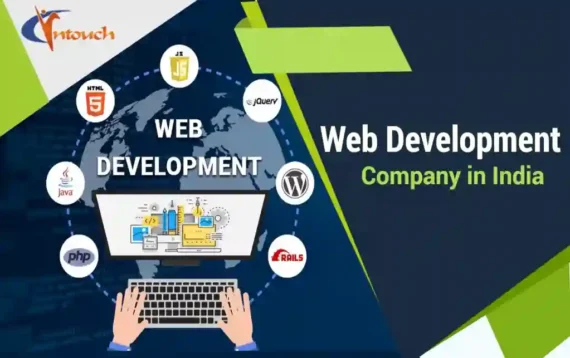The process of hiring a web developer is a crucial undertaking for any organization looking to build or expand its digital presence. From crafting an enticing job posting to the intricacies of onboarding a new team member, each step plays a pivotal role in securing the right talent. In this comprehensive guide, we will walk through the entire web developer hiring process, exploring best practices and strategies at each stage to ensure a successful recruitment journey.
1. Crafting a Compelling Job Posting:
The journey begins with the creation of a compelling job posting. This document serves as the first point of contact between your organization and potential candidates, and its effectiveness can significantly impact the quality of applicants. Key elements to include:
- Clear Job Title and Summary: A concise and engaging job title, followed by a brief summary that outlines the primary responsibilities and purpose of the role.
- Detailed Job Responsibilities: Clearly outline the specific tasks and responsibilities associated with the web developer position, emphasizing both front-end and back-end aspects if applicable.
- Required Skills and Qualifications: Specify the essential technical skills, programming languages, and qualifications necessary for success in the role. Distinguish between must-have and nice-to-have skills.
- Company Overview and Culture: Provide a brief overview of your organization, its culture, and values. Highlight any unique aspects of your work environment to attract candidates who align with your company ethos.
- Opportunities for Growth: Showcase any training programs, mentorship opportunities, or pathways for career advancement to convey a commitment to fostering the professional development of your team members.
2. Sourcing Candidates:
Once the job posting is live, the next step is to actively source qualified candidates. Employ a multi-faceted approach to reach a diverse pool of talent:
- Utilize Online Job Platforms: Post the job on popular job platforms such as LinkedIn, Indeed, and Glassdoor to maximize visibility.
- Engage with Professional Networks: Leverage professional networks, both online and offline, to tap into a broader talent pool. Participate in industry-specific forums, attend events, and connect with professionals on platforms like GitHub.
- Utilize Social Media: Share the job posting on your company’s social media channels to reach a wider audience. Encourage employees to share the post, amplifying its reach.
- Collaborate with Recruitment Agencies: Consider partnering with recruitment agencies that specialize in tech roles. They can help streamline the candidate search and screening process.
3. Screening Resumes and Portfolios:
As resumes and portfolios start pouring in, the screening process becomes instrumental in identifying candidates who align with your requirements:
- Review Resumes: Assess resumes to ensure candidates possess the requisite education, experience, and technical skills. Look for a track record of successful projects and experience with relevant technologies.
- Evaluate Portfolios: Pay close attention to the portfolios submitted by candidates. Evaluate the diversity of projects, the quality of code, and the ability to solve problems creatively.
- Check References: If applicable, reach out to provided references to gain insights into the candidate’s work ethic, collaboration skills, and overall performance in previous roles.
4. Conducting Initial Interviews:
After shortlisting candidates, the next step is to conduct initial interviews to delve deeper into their skills, experiences, and cultural fit:
- Technical Assessment: Administer a technical assessment to evaluate a candidate’s problem-solving skills, coding proficiency, and familiarity with relevant tools and frameworks.
- Behavioral Interview: Conduct a behavioral interview to assess a candidate’s interpersonal skills, teamwork, and communication abilities. Explore their approach to challenges and how they handle collaboration within a team.
- Cultural Fit: Assess the candidate’s alignment with your company’s values and culture. Evaluate if their work style and personality align with the dynamics of your existing team.
5. Technical Evaluation and Coding Tests:
To further assess a candidate’s technical proficiency, consider incorporating coding tests and technical evaluations:
- Coding Challenges: Present candidates with coding challenges or assignments that mirror real-world scenarios they might encounter in the role. This provides insight into their problem-solving and coding skills.
- Live Coding Interviews: Conduct live coding interviews, where candidates are given a problem to solve in real-time. This allows you to assess their coding abilities, thought process, and how well they handle pressure.
- Collaborative Coding Sessions: Include collaborative coding sessions, especially if teamwork is crucial in your development projects. This evaluates a candidate’s ability to work cohesively with others.
6. Final Interviews and Team Collaboration:
As candidates progress through the interview stages, the final interviews become an opportunity to delve deeper into their potential contribution to the team:
- Meet with Key Stakeholders: Arrange final interviews with key stakeholders, such as team leads, project managers, or executives. This provides different perspectives and ensures alignment with broader organizational goals.
- Team Collaboration Exercise: If possible, engage candidates in a collaborative coding or problem-solving exercise with the existing team. This gives both parties a sense of how well they work together in a practical setting.
7. Making the Offer:
After identifying the ideal candidate, it’s time to extend a job offer. Ensure the offer is comprehensive and addresses key aspects:
- Competitive Compensation: Provide a competitive salary based on industry standards and the candidate’s experience. Be transparent about compensation components, including bonuses, benefits, and other perks.
- Clear Job Expectations: Clearly outline the job expectations, responsibilities, and any specific project details. This ensures that both parties have a shared understanding of the role.
- Negotiation: Be open to negotiation, especially if the candidate raises valid points or has specific requirements. A flexible and collaborative approach can set a positive tone for the working relationship.
8. Onboarding and Integration:
Once the candidate accepts the offer, the onboarding process becomes crucial for a seamless integration into the team:
- Orientation and Welcome: Begin with a comprehensive orientation that introduces the new hire to company policies, procedures, and the organizational structure. Create a welcoming environment to ease the transition.
- Team Introductions: Facilitate introductions with team members, stakeholders, and relevant departments. Encourage team-building activities to foster a sense of camaraderie.
- Training and Development: Provide training sessions that familiarize the new hire with internal tools, systems, and project workflows. Offer opportunities for ongoing professional development.
- Feedback and Evaluation: Establish a system for regular feedback and performance evaluations. This ensures that the new hire receives constructive feedback, understands their progress, and can actively contribute to their professional growth.
Conclusion:
The web developer hiring process is a multifaceted journey that requires careful planning, effective communication, and a commitment to finding the right fit. From crafting an enticing job posting to onboarding a new team member, each step contributes to the overall success of building a strong and cohesive web development team. By following best practices at each stage, organizations can secure top-tier talent, foster a positive working environment, and embark on successful web development projects that make a meaningful impact.




